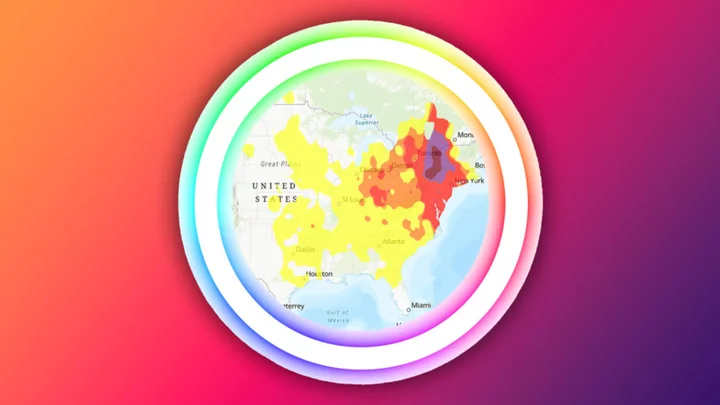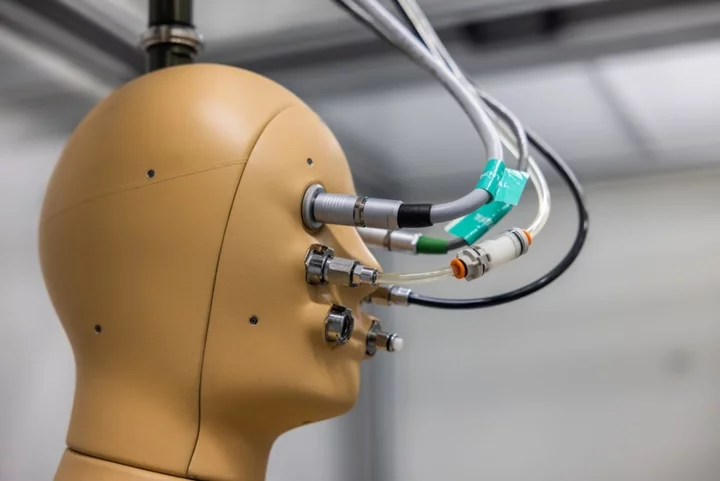
Meta scrambles to fix Instagram algorithm connecting ‘vast paedophile network’
Meta has launched an investigation into reports that Instagram is promoting child sexual abuse material through its algorithm. Facebook’s parent company set up a taskforce to investigate the claims after the Stanford Internet Observatory (SIO) said it found “large-scale communities” sharing paedophilia content on the platform. The SIO said it discovered the child sexual abuse material (CSAM) following a tip from the Wall Street Journal, whose report on Wednesday detailed how Instagram’s recommendation algorithm helped connect a “vast pedophile network” of sellers and buyers of illegal material. Instagram’s ‘suggested for you’ feature also linked users to off-platform content sites, according to the report, with the SIO describing the site as “currently the most important platform” for these networks. “Instagram has emerged as the primary platform for such networks, providing features that facilitate connections between buyers and sellers,” Stanford’s Cyber Policy Center wrote in a blog post. “Instagram’s popularity and user-friendly interface make it a preferred option for these activities.” Instagram users were able to find child abuse content through explicit hashtags like #pedowhore, which have since been blocked by Instagram. “Child exploitation is a horrific crime,” a Meta spokesperson said. “We’re continuously investigating ways to actively defend against this behaviour, and we set up an internal task force to investigate these claims and immediately address them.” Meta said that it had already destroyed 27 paedophile networks over the past two years on Instagram, as well as removed 490,000 accounts violating child safety policies in January alone. Other social media platforms hosting this type of content were also identified by the SIO, though to a much lesser extent. The SIO called for an industry-wide initiative to limit production, discovery and distribution of CSAM, while also urging companies to devote more resources to proactively identifying and stopping abuse. “Given the multi-platform nature of the problem, addressing it will require better information sharing about production networks, countermeasures, and methods for identifying buyers,” the organisation said. “SIO hopes that this research aids industry and non-profits in their efforts to remove child sexual abuse material from the internet.” Read More Instagram plans ChatGPT-style AI chatbot with multiple personalities Mark Zuckerberg reveals new VR headset ahead of Apple ‘Robot taxi’ with ‘ghost driver’ interacts with pedestrians in new experiment Earth hit directly by brightest explosion ever seen, scientists say
2023-06-08 18:46

The brightest explosion ever seen in the universe has finally been explained
It’s the brightest explosion ever seen in the universe, but until now it’s been a mystery that couldn't be explained. Telescopes observed an enormous blast in October which was regarded as the biggest of all time. It was identified as a gamma-ray burst, named GRB 221009A, which came as a result of a massive star collapsing into a black hole. At the time it was a mystery as to why the explosion shone so brightly. Now, further research published in the journal Science Advances has uncovered the reason it was so bright is due to the fact it was facing directly at us and also pulled stellar material along with it. Sign up to our free Indy100 weekly newsletter Hendrik Van Earthen from the University of Bath said: “The slow fade of the afterglow is not characteristic of a narrow jet of gas, and knowing this made us suspect there was an additional reason for the intensity of the explosion, and our mathematical models have borne this out. “Our work clearly shows that the GRB had a unique structure, with observations gradually revealing a narrow jet embedded within a wider gas outflow where an isolated jet would normally be expected.” The research into GRB 221009A has the potential to further the study of huge gamma-ray bursts, which can produce as much energy as the Sun will in its entire lifetime in the space of just a few seconds. “GRB 221009A represents a massive step forward in our understanding of gamma-ray bursts, and demonstrates that the most extreme explosions do not obey the standard physics assumed for garden variety gamma-ray bursts,” Brendan O’Connor, GW graduate student and lead study author, said. “GRB 221009A might be the equivalent Rosetta stone of long GRBs, forcing us to revise our standard theories of how relativistic outflows are formed in collapsing massive stars.” Have your say in our news democracy. Click the upvote icon at the top of the page to help raise this article through the indy100 rankings.
2023-06-08 18:24

Toshiba board recommends shareholders support JIP-led $14 billion buyout
TOKYO (Reuters) -Japan's Toshiba Corp said on Thursday its board of directors has decided to recommend shareholders take up a
2023-06-08 11:28

Fidelity’s Vast Trove of Data Coveted by Tech Firms in Age of AI
As tech companies the world over race to create AI services akin to ChatGPT, the underlying raw material
2023-06-08 09:56

UK to curb crypto advertising with 'cooling off' periods, risk warnings
LONDON British consumers buying cryptoassets will get a 24-hour "cooling-off" period for the first time from October under
2023-06-08 07:27

Britain to host first global summit on artificial intelligence safety
By Kanishka Singh and Andrea Shalal WASHINGTON (Reuters) -Britain will host a global summit on artificial intelligence safety later this
2023-06-08 06:48

AirNow’s Interactive Map Shows You the Air Quality Index in Your Area
If you’re in the red on AirNow’s air quality map, you should stay inside.
2023-06-08 04:58

GameStop misses quarterly revenue estimates
GameStop posted its fourth consecutive fall in quarterly revenue on Wednesday and missed market estimates, as consumers dialed
2023-06-08 04:17

The US Senate is working to get up to speed on AI basics ahead of any legislation
The US Senate is inching forward on a plan to regulate artificial intelligence, after months of seeing how ChatGPT and similar tools stand to supercharge — or disrupt— wide swaths of society.
2023-06-08 03:46

Microsoft to offer OpenAI's GPT models to government cloud customers
(Reuters) -Microsoft Corp is bringing the powerful language-producing models from OpenAI to U.S. federal agencies using its Azure cloud service,
2023-06-08 03:15

Binance CEO's trading firm received $11 billion via client deposit company, SEC says
By Tom Wilson LONDON Merit Peak, an offshore trading company controlled by Binance CEO Changpeng Zhao, received around
2023-06-08 02:16

Scientists invent first ever ‘breathing, sweating, shivering’ robot
Scientists say they have built the first ever “breathing, sweating, shivering” robot, designed to cope and adapt to different temperatures. The heat-sensitive “thermal mannequin”, dubbed ANDI, features 35 individually controlled surfaces with pores that bead sweat like humans. Designed by US firm Thermetrics for use by researchers at Arizona State University, the robot was created to help better understand the health impacts of extreme temperatures on the human body. “ANDI sweats, he generates heat, shivers, walks and breathes,” said Konrad Rykaczewski, principal investigator for the ASU research project, whose work aims to identify and measure the effects of extreme heat on humans. “There’s a lot of great work out there for extreme heat, but there’s also a lot missing. We’re trying to develop a very good understanding of how heat impacts the human body so we can quantitatively design things to address it.” Some of the 10 sweating robots built by the researchers are already being used by clothing companies for garment testing, however ASU’s android is the only one that can be used outdoors. This allows experiments in previously impossible extreme heat environments, as well as studies into the impact of solar radiation. ASU researchers plan to test ANDI in heat-vulnerable areas around Phoenix this summer in an effort to understand how different ages and body types are impacted by high temperatures. “We can move different BMI models, different age characteristics and different medical conditions [into ANDI],” said Ankit Joshi, an ASU research scientist leading the modelling work and the lead operator of ANDI. “A diabetes patient has different thermal regulation from a healthy person. So we can account for all this modification with our customised models.” The results will be used to design interventions, such as cooling clothes and technologies to protect against heat stroke and heat-related deaths. Read More Electric cars could save more than 100,000 lives, study claims Electric cars could save more than 100,000 lives, study claims ‘I saw the future. It left me in tears’ This could be the end of ‘ducking’
2023-06-08 01:46
